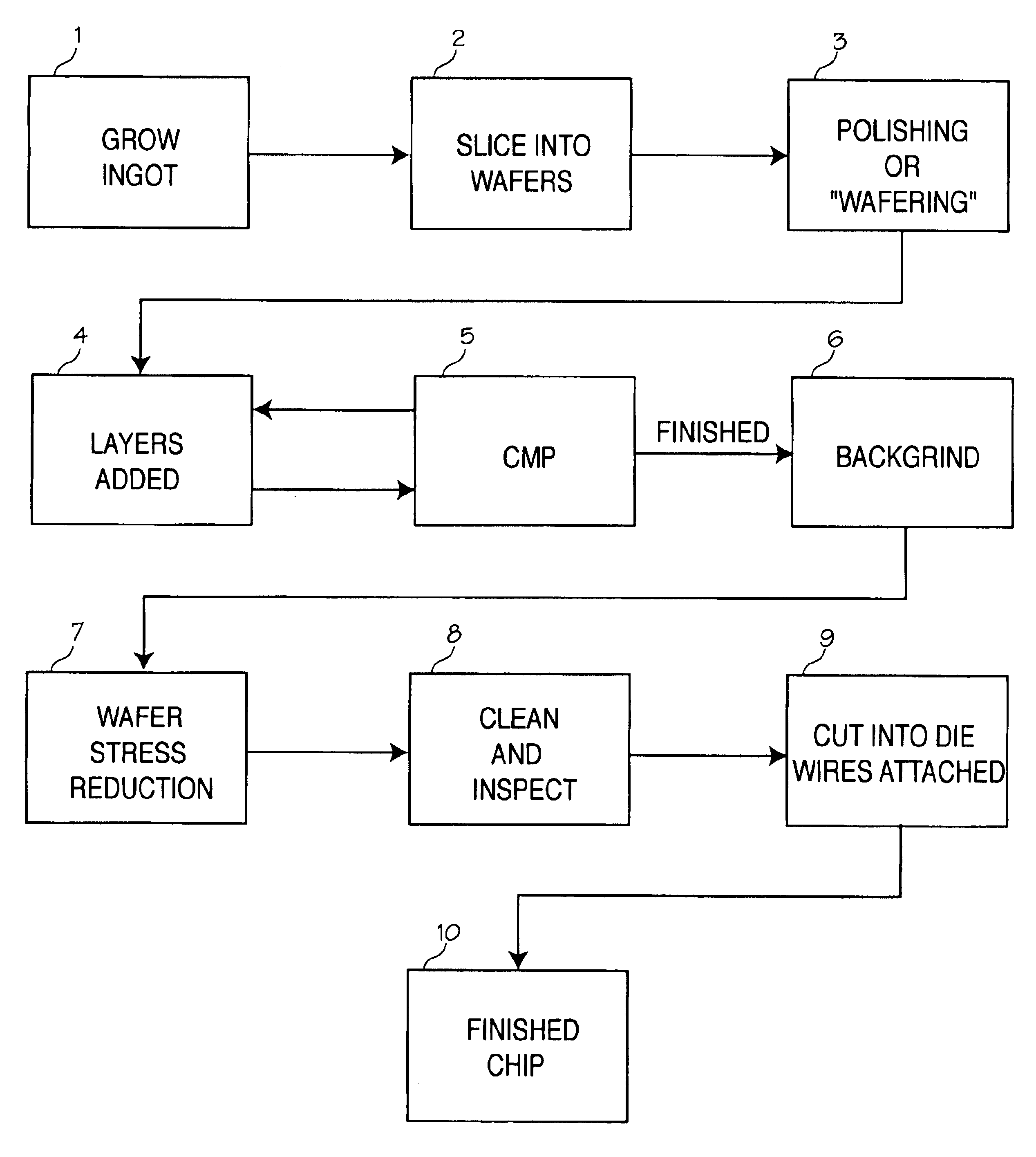Method of spin etching wafers with an alkali solution
a technology of spin etching and alkali solution, which is applied in the direction of basic electric elements, electrical equipment, semiconductor devices, etc., can solve the problems of acid damage to the outer edge of the top layer of the wafer, wet etching with acid poses four significant problems, and is susceptible to breakag
- Summary
- Abstract
- Description
- Claims
- Application Information
AI Technical Summary
Benefits of technology
Problems solved by technology
Method used
Image
Examples
Embodiment Construction
FIG. 1 is a block diagram of a system for producing integrated chips, including the backgrinding step and the step of spin etching the backside of a wafer with an alkali etch solution. In step 1 silicon is purified and cast into electronic-grade ingots. The ingots are then converted into high purity, single crystal silicon by growing a crystal silicon structure. In step 2 the ingot is sliced into wafers using a diamond saw, with each wafer being approximately 1 / 40" thick. In step 3 each wafer is polished, lapped smooth, damage decorated with acid to reveal hidden defects, and may be ground either over the wafer surface or at its edges. After the polishing processing, also known as wafering, is complete the new prime wafer is ready to have integrated circuits built upon it. In steps 4 and 5, integrated circuits are built onto the front side of the wafer. In step 4 at least one layer of material is deposited onto the silicon wafer substrate. Then, in step 5, a CMP process is applied t...
PUM
 Login to View More
Login to View More Abstract
Description
Claims
Application Information
 Login to View More
Login to View More - R&D
- Intellectual Property
- Life Sciences
- Materials
- Tech Scout
- Unparalleled Data Quality
- Higher Quality Content
- 60% Fewer Hallucinations
Browse by: Latest US Patents, China's latest patents, Technical Efficacy Thesaurus, Application Domain, Technology Topic, Popular Technical Reports.
© 2025 PatSnap. All rights reserved.Legal|Privacy policy|Modern Slavery Act Transparency Statement|Sitemap|About US| Contact US: help@patsnap.com



